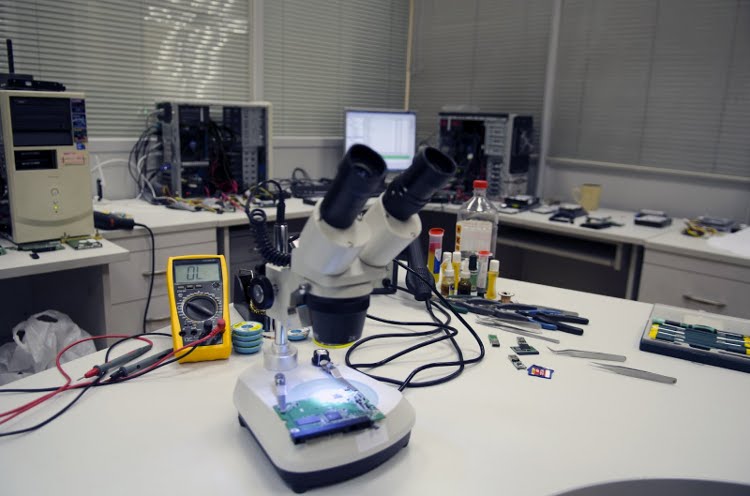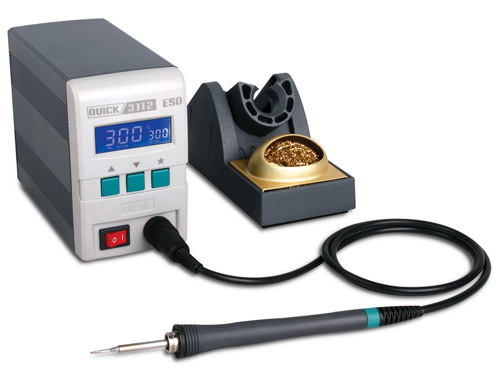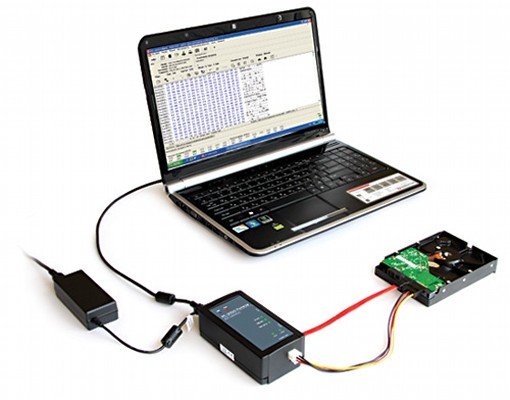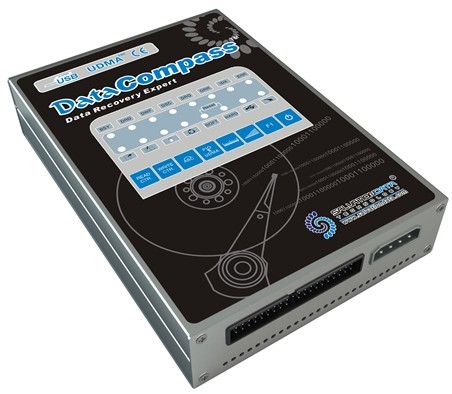How to recover data in Storelab

In a previous post, we wrote about situations when a drive should be taken for repair. We remind you that delivery and diagnostics are free of charge - therefore, if something is wrong - it is better to play it safe. In this review, we will talk about what happens to the disk when it was brought to us.
Data and disk recovery begins with a device analysis. When transferring the device, our experts clarify the circumstances of the problems. If the disk was delivered by courier - after the disk arrives to us, the manager calls up with the client to find out all the details.
We need to know all the details of what happened. If you drop a disk - say you dropped it, if you wet it - say you wet it, formatted the disk - say it. It is also worth saying - did you try to recover the data yourself, if so, how, and what came of it.
With mechanical damage
First of all, we determine whether it is possible to start a disk without worsening the situation. In the event that there is physical damage or suspicion of them, the disk cannot be connected to the equipment, since when starting the head, it can damage the surface of the pancake. If this happens, then it will be impossible to restore the data .
Disk repair in case of mechanical damage begins with the fact that the disk is taken to a clean room. The reading room is not just a room with regular wet cleaning, it is a dust-free room with a table with an antistatic coating - so that there are no static discharges during work with the disk, which could damage some elements of the electronics board and the BMG switch . A specialist in a clean room is dressed in overalls: a suit, boots, gloves - everything is certified according toGOST R 52538-2006 . Again, this is done to protect against static electricity, and to prevent dust or hair from falling onto the surface of magnetic pancakes.
What are they doing in a clean room?
The disk is opened. But first you need to clean the disk, remove all dust from it, so that when you open it, it does not get on the surface of the pancakes. Especially a lot of dust accumulates in the gap between the lid and the body of the Hermoblock. First of all, they wipe the disk with lint-free napkins, then they blow all the surfaces of the case with compressed air. To open the disk, various screwdrivers are required: torx, Phillips, flat. In the photo at the beginning of the post - inspection of the electronics board for damage.
Open the disk in a laminar box. Next, the surface of the pancakes is examined for scratches and cuts, the possibility of data recovery and how many donor hard drives are required depends on this. And also look at the state of the heads, sliders (reading elements about 0.1-0.5 square mm in size), filters, spindle. The main equipment here is a microscope. All the small elements of the hard drive look through it, and there are more than enough of them in it: heads, sliders, legs of microcircuits, the surface of magnetic plates.
But to study the heads of the hard drive, they must be removed. This is done using the head puller Read Write Head Replacement Tool. Magnetic heads are shot without touching the plates and without damaging the slider. The puller must be mounted on the block of magnetic heads (BMG) and put on the drive plate. The slider easily moves from the parking zone to the puller's petals, BMG is fixed on the puller and together with the heads they are removed from the drive plates.

Magnetic Head Puller Read Write Head Replacement Tool
If the engine is jammed, i.e. If the disks do not spin, then it is necessary to wedge the disk or, using the same equipment (Read Write Head Replacement Tool), remove the magnetic plates and transfer them to a working donob of the donor disk, inside which the data will now be located. When transferring magnetic disks, there may be problems with installation in a new pressurized unit. If for old disks it was necessary to monitor only the preservation of the distance between the plates, then in new disks it is also necessary to monitor the external and internal diameters of the magnetic disks.
Component transplant

Tripod for fixing discs when replacing BMG
An important element will be a tripod for fixing discs. Usually there are two tripods, the second for fixing the donor disk when replacing the mechanical parts of the disk. After all, before you connect the disk to the PC-3000 firmware and start reading data, you need to put it in order. For this, it is necessary to replace absolutely all damaged parts with similar ones. Even on the scale of one manufacturing company, the internal structure of the disk is made differently, so only a similar model disk can be a donor.
Operational work on data recovery requires a large database of donor disks. Transplanting the details of one disk to another is laborious and, one might say, jewelry work. It can be compared with resuscitation in a hospital; the tools of a data recovery specialist are also similar to the tools of a surgeon. The list is made up of such tools as:
- Tweezers (vacuum, various forms, heat-resistant and medical). Vacuum tweezers allow you to move very small components from the donor to the patient. We use Quick vacuum tweezers . This unit allows you to lift objects up to 120 grams. And also all its elements - pen, tips and suction cups are made of antistatic materials, which is important in our profession. Quick 381 ESD

Vacuum Tweezers - Scalpels
- Refined alcohol
And:
- Soldering flux of various brands
- Soldering stations of three types: hot air, conventional and infrared for soldering complex components. We use a Quick soldering station with thermal tweezers and an induction heater, which provides quick heating and good thermal conductivity. This station is heated to a temperature of 450 ° C. The power of such a station is 60 watts.

Soldering Station Quick 3112 ESD - Solder
- Copper braid for removing solder
- Compressed air
- Lint-free wipes that do not leave particles on the surface
- Stencils for soldering microcircuits
- Ultrasonic bath
All these tools help to restore not only the data, but also the performance of the disk itself.
Only after the disk is brought into working condition, it is connected to the machine.
Work with a disk through a software package

PC-3000 Portable for Windows Complex
For disc diagnostics, the PC-3000 UDMA complex or its younger brother PC-3000 Portable are used. The portable version is convenient to move, but has a stripped down functionality that does not allow you to run complex disks, it works slowly via USB. The software of the complex is built using MDI technology. This allows you to work with two ports of the PC-3000 UDMA board simultaneously and independently from each other in one application. In addition, the software includes: choice of utility, ATA commander, script system, database management. The complex consists of: the PC-3000 UDMA board itself, a terminal for issuing commands, PC-3000 SCSI for working with SCSI hard disks, a SAS controller for working with SAS hard disks, Data Extractor software and various adapters through which ATA can be fed commands:
- ide-sata
- micro sata-sata
- slim sata-sata
- zif - ide
- other
The script system, which is part of the PC-3000 UDMA, allows you to independently implement the algorithms for issuing commands to the HDD in the built-in programming language Visual Basic Script , including data preparation and interpretation of the results. To access the HDD, a developed object model is provided, which is used by the complex utilities.
Data Extractor allows you to recover data from logically faulty disks, it is able to work under most common file systems such as: FAT, NFTS, HFS, EXT2, EXT3, UFS1, UFS2 and some others.
Then, on this complex, a utility is launched that is separate for each specific drive. The disk must go through initialization: read the service area, interview the heads, give the passport, SMART and get ready without any extraneous sounds for a certain time. Next, back up the service area to local disks to us (just in case). Then we begin to look at the surface, the head map, determine the file system, the partition table, what happened and what needs to be restored.


Complex Data Compass Premium with RAID Data Recovery
Recover data using the complex Salvation Data . This complex allows you to recover data from faulty RAID arrays and HDD:
- With scratched discs
- From drives that have bad clusters
- From disks with a defective magnetic head unit
- As well as a HDD with cache problems, these are usually Seagate Barracuda 7200.7 and 7200.11 drives
The complex also allows you to analyze and recover data from FAT and NFTS file systems if the disk is functioning, but the file system logic is damaged. And selectively recover data from failed disks ( file data recovery ), while saving a lot of time.
For RAID arrays, there is a data recovery and logical analysis utility for:
- Missing disk segment
- Damage to disk configurations and / or parameters
- Damage to the hardware card of the array and / or server system
The complex works with any disks (ATA, SATA) and any disk image format.
The following types are supported for RAID arrays:
- Raid 0
- Raid 1
- Raid 5
- Raid 5E
- Raid 5EE

PC-3000 Flash complex
For Flash and SSD-drives there is a PC-3000 Flash and Flash Extractor complex - two identical complexes from different manufacturers and with a completely different operating principle. But from both devices we get a flash drive dump converted to its image. Here, one can’t do without adapters for various types of flash-memory:
- tsop 48
- tsop 56
- Bga

Programmer SuperPro 580U
We recover data from flash drives with the help of programmer SuperPro 580U . This equipment supports 33 thousand devices from almost all manufacturers of semiconductor chips. The programmer has current and voltage protection, which provides protection for both the programmer and the programmable device. Many chips are supported as standard without adapters. And another plus of the SuperPro 580U is its speed. Data recovery occurs in the shortest possible time.
That’s probably all. Write us questions and what you would like to read about in the following posts.
Read also:
- Fifteen myths about data recovery and loss
- How to destroy data so that the FSB cannot restore it
- When your drive should be carried for repair
Our website - www.storelab-rc.ru
